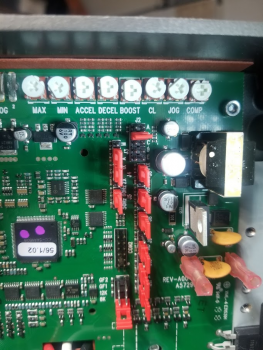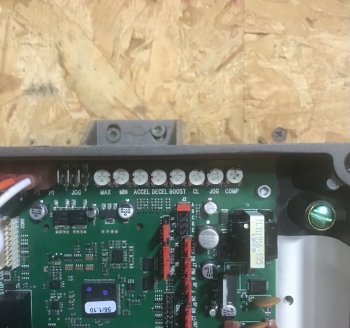I also run a 27D, but in my case it's on 115v input voltage. A couple of thoughts:
- I didn't change the Boost Voltage adjustment as it came from the factory. Even after re-reading the KBAC manual, I don't see a reason to adjust this feature. I'd say leave it at the 9 O'clock position, as it came from the factory.
- Take a look at whether you have your 220v input to your 27D to see if it is connected to a GFCI breaker. These KBAC units don't play well with ground fault breakers. I found that out on a 24D I have on another machine. A lot of newer houses will have GFCI breakers on all circuits built into the service panel.
- If you are adding another breaker panel (100 amp) and that is a sub panel served by your 60 amp panel, it won't really help your load carrying capacity. You'll still be limited to an overall 60 amp service based on the rating of your primary panel. Sure, you can add more breakers in the 100 amp subpanel, but that doesn't increase the capacity of the incoming service. I am not a licensed electrician (any more), so check with a local electrician to review this question, and compliance with local codes.
- Get a digital volt meter and check the 220 voltage that you are connecting to the KBAC unit. Check across the hot legs and across each of the legs to neutral. Typically, the voltages you see at your KBAC unit shouldn't vary more than +/-5%.
- With the events you've had I would be suspicious of how your overall house load is affecting voltage to your grinder. Try this: with a digital volt meter connected to your 220v supply at the grinder, turn on each high load device you have in your house, including Electric Range, Electric Water Heater, Electric Heaters, etc. Anything that has a high load - turn them on individually then combined. If you see a large drop in the incoming voltage at the grinder you might have identified the problem. The solution is likely to increase the wire size feeding the high load devices in your house and grinder. Again, check with an electrician.
- Also keep in mind that not all incoming electric services to a residence are the same. You can have a "dirty" line that has large frequency variations, voltage fluxuations, or other line harmonics problems created by adjacent electric customers. These issues are much harder to identify and correct.
Hope this helps.



